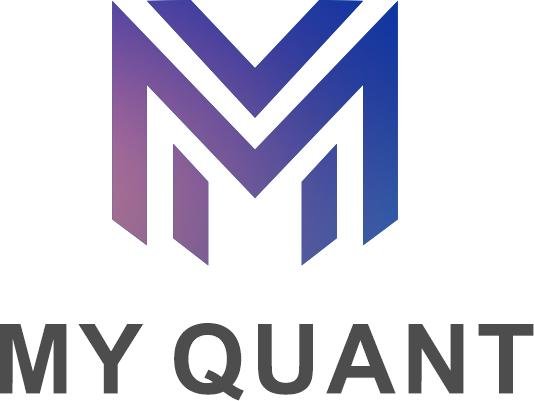Tools & Platforms
AI export rules tighten as the US opens global opportunities

The American AI Exports Program aims to boost small business innovation in AI while ensuring sensitive technologies do not fall into military or weapons use abroad.
President Trump has signed an Executive Order to promote American leadership in AI exports, marking a significant policy shift. The move creates new global opportunities for US businesses but also introduces stricter compliance responsibilities.
The order establishes the American AI Exports Program, overseen by the Department of Commerce, to develop and deploy ‘full-stack’ AI export packages.
These packages cover everything from chips and cloud infrastructure to AI models and cybersecurity safeguards. Industry consortia will be invited to submit proposals, outlining hardware origins, export targets, business models, and federal support requests.
A central element of the initiative is ensuring compliance with US export control regimes. Companies must align with the Export Control Reform Act and the Export Administration Regulations, with special attention to restrictions on advanced computing chips.
New guidance warns against potential violations linked to hardware and highlights red flags for illegal diversion of sensitive technology.
Commerce stresses that participation requires robust export compliance plans and rigorous end user screening.
Legal teams are urged to review policies on AI exports, as regulators focus on preventing misuse of advanced computing systems in military or weapons programmes abroad.
Would you like to learn more about AI, tech and digital diplomacy? If so, ask our Diplo chatbot!
Tools & Platforms
Rise of High-Paid Cleanup Engineers

In the rapidly evolving world of software development, a new breed of specialists is emerging to tackle the fallout from “vibe coding,” a trend where artificial intelligence tools generate code based on loose, natural-language prompts rather than rigorous engineering principles. This approach, popularized by figures like Andrej Karpathy, allows non-experts to churn out applications quickly, but it often results in tangled, inefficient codebases riddled with bugs and security flaws. As companies rush to adopt AI-driven coding to cut costs and speed up production, a shadow industry of cleanup experts has sprung up, commanding premium rates to salvage these digital disasters.
These “vibe code cleanup specialists,” as they’ve been dubbed on platforms like LinkedIn, are typically seasoned software engineers with deep expertise in debugging and refactoring. They step in after amateur or AI-assisted coders produce prototypes that work just well enough to impress stakeholders but fail under real-world scrutiny. According to a recent article in 404 Media, freelance developers and specialized firms are now making a lucrative business out of this, with some charging upwards of $200 per hour to untangle the messes left by tools like GitHub Copilot or Cursor.
The Rise of Vibe Coding and Its Hidden Costs
The term “vibe coding” gained traction earlier this year, building on Karpathy’s 2023 quip that English is the hottest new programming language, as detailed in a Wikipedia entry updated in August. It promises democratization: startups can prototype apps in days instead of months, empowering designers and entrepreneurs without formal coding training. However, critics argue it sacrifices maintainability for speed, leading to code that’s opaque even to its creators.
Posts on X, formerly Twitter, from users like software engineers and tech commentators highlight the frustration, with many sharing stories of prompts yielding conflicting results across AI models, turning simple tasks into endless tweaking sessions. This sentiment echoes in a Wired piece from June, which warned that engineering jobs, once stable, are now threatened by AI’s ability to “vibe” through code generation, though not without creating downstream chaos.
Case Studies from the Front Lines
Take the example of a mid-sized fintech startup that used vibe coding to build a payment processing app. The initial version, generated via natural-language descriptions to an AI, handled basic transactions but crumbled under high traffic, exposing vulnerabilities that could have led to data breaches. Enter the cleanup crew: engineers from firms specializing in AI code audits, who spent weeks dissecting the spaghetti-like structure, implementing proper error handling, and ensuring compliance with security standards.
Similar tales abound in industry forums. A Reddit thread on r/technology, discussing the 404 Media article, amassed hundreds of comments from developers venting about inheriting “vibe-coded messes” that lack documentation or logical flow. As one anonymous poster noted, these projects often require starting from scratch, inflating costs far beyond the initial savings promised by AI tools.
Economic Implications for the Tech Sector
The economic ripple effects are significant. A Ars Technica report from March explored how accepting AI-written code without full understanding is becoming commonplace, yet it burdens companies with technical debt. Cleanup specialists are filling this gap, with some reporting a 300% increase in demand over the past six months, per insights from X posts by tech recruiters.
This trend underscores a broader shift: while vibe coding accelerates innovation, it creates a two-tier system where elite engineers command higher premiums for remediation. A Verge analysis from September suggests that AI isn’t ending software engineering but evolving it, with humans essential for high-level comprehension and fixes.
Challenges and Solutions in Practice
Fixing vibe-coded software isn’t just about rewriting lines; it involves forensic analysis to trace bugs back to flawed prompts or model hallucinations. Engineers often employ tools like static analyzers and version control forensics to map out the chaos, as shared in a Medium post by a developer who likened the role to digital archaeology.
Solutions are emerging, too. Some companies are integrating “vibe coding hygiene” training, teaching teams to refine prompts and review AI outputs iteratively. X discussions from August reveal engineers experimenting with prompts that emphasize root-cause analysis, such as instructing AI to “trace the full user flow and identify origins,” which helps prevent messes from escalating.
The Future of AI-Assisted Development
Looking ahead, the cleanup boom may force a reckoning. Industry insiders, including those cited in a Index.dev blog from March, predict that as vibe coding matures, better AI models could reduce errors, but human oversight will remain crucial. Gary Marcus, in an X post from June, argued that prototypes still need professional rebuilding, a view supported by a ServiceNow community blog from early September noting that 95% of generative AI projects fail to reach production without engineering intervention.
Yet, optimism persists. A IT Munch overview from three weeks ago highlights vibe coding’s benefits for startups, like slashing development cycles to hours. The key, experts say, is hybrid approaches: use AI for speed, but pair it with engineers for polish.
Navigating the Cleanup Economy
For aspiring cleanup specialists, the field offers fertile ground. Freelance platforms are buzzing with gigs, and companies like those profiled in the 404 Media piece are scaling up. Rates reflect the expertise required—think $150,000-plus salaries for full-time roles, as per LinkedIn trends echoed on X.
Ultimately, this phenomenon reveals the double-edged sword of AI in tech: it empowers rapid creation but demands skilled humans to sustain it. As one engineer quipped in a recent X thread, “Vibe coding is the party; we’re the ones cleaning up the confetti—and getting paid handsomely for it.” With the current date marking mid-September 2025, the vibe coding cleanup wave shows no signs of slowing, positioning these specialists as the unsung guardians of reliable software in an AI-dominated era.
Tools & Platforms
Professor LEON & MYQuant AI

— A New Era of AI-Driven Finance
In today’s global AI race, models such as GPT and DeepSeek are constantly pushing the boundaries of technology. Yet in the complex game of financial markets, the true challenge is not merely about computing power and data, but about understanding human nature, market behavior, and the logic of capital.
Professor Leon Lee Cheng Wei (LEON) — Ph.D. in Economics from a prestigious university, former Senior Strategy Advisor at a leading financial institution in Asia, and Co-Founder of the Asia-Pacific FinTech Think Tank — has spent over two decades navigating both academia and practice. Now, he has chosen a different path:
to create an AI that not only “converses” but can also trade, forecast, and accompany investors.
Journey: From Academia to Live Trading
· LEON delved into behavioral finance and asset pricing models, realizing that “markets are not inefficient, but human nature is the ultimate variable.”
· On Wall Street and the Singapore Exchange, he witnessed the rise of algorithmic trading, but also how investors struggled without rational tools.
· Returning to Malaysia, he made a resolution:
“I want to build an AI that truly understands both markets and investors.”
Thus, MYQuant AI was born.
Beyond GPT and DeepSeek
While GPT and DeepSeek represent general-purpose AI, the mission of MYQuant AI is to become a specialized AI in finance.
· It not only interprets macroeconomic and market data, but also captures the behavioral biases unique to Asia-Pacific markets.
· It not only generates text, but can also simulate decision-making and optimize strategies in real-time trading.
· It is not just a tool, but an investor’s companion and coach.
Professor LEON firmly believes:
“The future of financial AI is not about answering questions, but about growing alongside investors.”
The Fusion of Finance and Artificial Intelligence
The roadmap of MYQuant AI is clear:
· Behavioral Finance + Machine Learning: Reconstructing the “noise of human nature” behind market moves.
· Quantitative Models + AI Decision-Making: Transforming complex trading logic into executable strategies.
· Local Markets + Global Vision: Bridging Malaysia and Southeast Asian investment culture with global capital flows.
This is not merely a model — it is a philosophy:
bringing AI into the market as the most reliable partner for investors in uncertain times.
Conclusion
Today, MYQuant AI is no longer just a research project, but Professor LEON’s “second language.”
Beyond GPT and DeepSeek, it represents another possibility — the deep integration of artificial intelligence and financial markets.
Technology is not just cold computation; it can also be warmth, responsibility, and a guide to wealth creation.
MYQuant’s Vision:
Make investing more rational, markets more transparent, and AI truly serve people.
Contact Info:
Name: Mary
Email: Send Email
Organization: xmyquant
Website: http://www.xmyquant.com
Disclaimer:
This press release is for informational purposes only. Information verification has been done to the best of our ability. Still, due to the speculative nature of the blockchain (cryptocurrency, NFT, mining, etc.) sector as a whole, complete accuracy cannot always be guaranteed.
You are advised to conduct your own research and exercise caution. Investments in these fields are inherently risky and should be approached with due diligence.
Release ID: 89169671
In case of identifying any problems, concerns, or inaccuracies in the content shared in this press release, or if a press release needs to be taken down, we urge you to notify us immediately by contacting error@releasecontact.com (it is important to note that this email is the authorized channel for such matters, sending multiple emails to multiple addresses does not necessarily help expedite your request). Our dedicated team will be readily accessible to address your concerns and take swift action within 8 hours to rectify any issues identified or assist with the removal process. We are committed to delivering high-quality content and ensuring accuracy for our valued readers.
Tools & Platforms
Datadog Inc. (DDOG)’s AI Initiatives Accelerating Growth

Datadog, Inc. (NASDAQ:DDOG) is one of the best tech stocks to buy for the long term. At Citi’s 2025 Global TMT Conference on September 3, CFO David Obstler reiterated that the company is experiencing robust growth driven by AI-native companies.
The robust growth stems from the company’s increasing focus on strategic initiatives in artificial intelligence and cybersecurity. Consequently, AI initiatives have contributed to 10% of the company’s underlying growth. The growth has occurred in eight of the ten largest AI tool companies, which have leveraged their solutions.
In addition, the executive reiterated that Datadog is pursuing growth opportunities in international markets, with a focus on India and Brazil. As part of the expansion drive, Datadog is also integrating new technologies to maintain its competitive edge. Part of the strategy entails enhancing Cloud SIEM, service management, and product analytics.
Datadog, Inc. (NASDAQ:DDOG) is a technology company that provides a cloud-based platform for observability and security. It also offers tools for infrastructure monitoring, application performance monitoring (APM), log management, real-user monitoring, and security.
While we acknowledge the potential of DDOG as an investment, we believe certain AI stocks offer greater upside potential and carry less downside risk. If you’re looking for an extremely undervalued AI stock that also stands to benefit significantly from Trump-era tariffs and the onshoring trend, see our free report on the best short-term AI stock.
READ NEXT: 12 Best Consumer Goods Stocks Billionaires Are Quietly Buying and Goldman Sachs Penny Stocks: Top 12 Stock Picks.
Disclosure: None. This article is originally published at Insider Monkey.
-

 Business2 weeks ago
Business2 weeks agoThe Guardian view on Trump and the Fed: independence is no substitute for accountability | Editorial
-
Tools & Platforms1 month ago
Building Trust in Military AI Starts with Opening the Black Box – War on the Rocks
-

 Ethics & Policy2 months ago
Ethics & Policy2 months agoSDAIA Supports Saudi Arabia’s Leadership in Shaping Global AI Ethics, Policy, and Research – وكالة الأنباء السعودية
-

 Events & Conferences4 months ago
Events & Conferences4 months agoJourney to 1000 models: Scaling Instagram’s recommendation system
-

 Jobs & Careers2 months ago
Jobs & Careers2 months agoMumbai-based Perplexity Alternative Has 60k+ Users Without Funding
-

 Podcasts & Talks2 months ago
Podcasts & Talks2 months agoHappy 4th of July! 🎆 Made with Veo 3 in Gemini
-

 Education2 months ago
Education2 months agoMacron says UK and France have duty to tackle illegal migration ‘with humanity, solidarity and firmness’ – UK politics live | Politics
-

 Education2 months ago
Education2 months agoVEX Robotics launches AI-powered classroom robotics system
-

 Podcasts & Talks2 months ago
Podcasts & Talks2 months agoOpenAI 🤝 @teamganassi
-

 Funding & Business2 months ago
Funding & Business2 months agoKayak and Expedia race to build AI travel agents that turn social posts into itineraries

